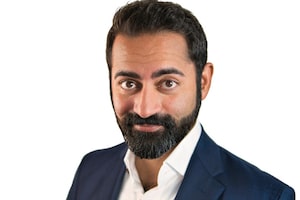If you already have a million-dollar portfolio, you have access to a different world of financial advisers than the average household.
From time to time, people ask me for help finding a financial adviser, and $1-million dollars is generally the threshold that tells me whether it’s going to be an easy introduction, or if I’m going to have to dedicate significant time to explain the economics of financial advice models in Canada and what questions to ask any prospective adviser they interview.
It is, of course, possible for great financial advisers to exist below the $1-million client minimum, just as quality advisers are not guaranteed above that threshold. But what complicates the issue is that the pool of people calling themselves financial advisers who deal with the mass market has too many bad actors. Earlier this week, a shocking report from Ontario’s insurance regulator on the investigation of 130 insurance agents resulting in enforcement actions against 65 of them – 50 per cent! – left mouths agape inside and outside of the industry.
The more money people already have is also correlated to how receptive they are to paying out of pocket for a fee-for-service practitioner: advisers who only charge for advice on either an hourly or flat rate project fee. This model of advice is also helping to address the HENRY problem (”high earner, not rich yet”), but fee-for-service models are still a small share of the market for financial advice.
I decided to ask some financial advisers why they have investment minimums and what they do when a prospective client doesn’t meet their threshold. Most wouldn’t go on the record because they already knew their firms would prevent them from publicly speaking their mind. But a few did.
Jason Pereira, a senior partner and financial planner at Woodgate Financial has a client minimum of $1-million. Exceptions are made if a prospective client has a reasonable expectation of breaching the threshold within three years. No minimum exists for the children of existing clients, although the service offering for them tends to be less robust, as their needs are less complex and already tied to the parents’ planning considerations.
“Minimums are a proxy for revenue, so it’s effectively a minimum revenue model. My offering is designed around providing high-touch service to clients. Providing this service at all levels of wealth is not feasible, given the time and overhead,” Mr. Pereira said. His business model allows for a ratio of 85 households per adviser.
“We have quarterly meetings with clients, so just doing the math on how many hours there are in a year to prep for, meet, and do all the work required by our comprehensive offering, trying to do it for more people than that is not feasible. The human mind is not capable of keeping an infinite number of relationships straight.”
Mr. Pereira also noted that the operational overhead is high in Canada compared with the U.S., where one could register for less than $10,000 and effectively run a solo practice from home with $25,000 to $30,000 in overhead expenses per year.
“There is no such correlation in Canada. Lowering the cost of distribution of advice to Canadians is a major issue no one in Canada is talking about.”
When a prospective client doesn’t meet their practice’s minimums, Mr. Pereira says he always refers them to someone who provides financial planning, which can include advice-only financial planners.
“Planning is the priority,” he says.
Aravind Sithamparapillai is an associate at Ironwood Wealth Management Group and doesn’t have a hard minimum, “but we do have specific clientele that we focus on. My work is predominantly with midwives, sales professionals, and certain types of small business owners while my colleagues have focuses such as incorporated tradespeople or physicians.”
While they don’t have a minimum requirement for an existing portfolio size when taking on new clients, this is with the caveat that new clients are able to commit at least $500 to $1,000 per month toward their goals. When a prospective client isn’t a fit for their practice, they may recommend flat fee financial planners but recognize that quality advice isn’t always accessible to the mass market.
Mr. Sithamparapillai says this often leaves certain segments of the population open to being preyed upon by people with ulterior motives or providing suboptimal advice.
“We have created some social media channels where we are trying to share tips, tricks and general financial-planning educational advice on, but this is an area that is challenging, especially when the follow-up recommendation is to speak to an industry professional for personal and unique advice based on individual circumstances.”
Mr. Sithamparapillai’s advice for people on the lower end of the income or wealth spectrum who may not be in a position to pay out of pocket for financial planning and don’t meet the asset minimums of financial planners who manage money is to inquire about pro-bono financial planning on the Financial Planning Association of Canada website.
Preet Banerjee is a consultant to the wealth management industry with a focus on commercial applications of behavioural finance research. He is a member of the FPAC.
 Preet Banerjee
Preet Banerjee